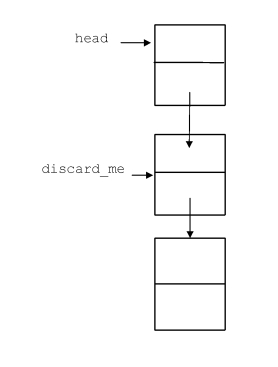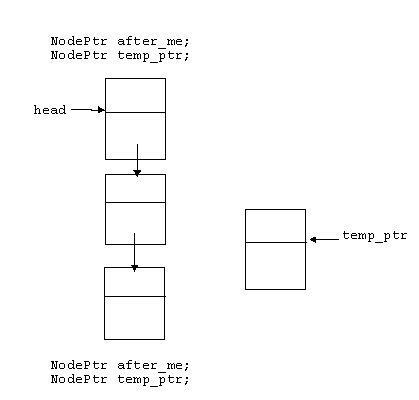Deck 17: Linked Data Structures
Question
Question
Question
Question
Question
Question
Question
Question
Question
Question
Question
Question
Question
Question
Question
Question
Question
Question
Question
Question
Question
Question
Question
Question
Question
Question
Question
Question
Question
Question

Unlock Deck
Sign up to unlock the cards in this deck!
Unlock Deck
Unlock Deck
1/30
Play
Full screen (f)
Deck 17: Linked Data Structures
1
A stack is a first-in-first-out data structure.
False
2
A tree is a recursive structure.
True
3
Data is removed at the back of the queue.
False
4
To insert a node into a doubly linked list requires references to the node before and after the location we wish to insert the new node.

Unlock Deck
Unlock for access to all 30 flashcards in this deck.
Unlock Deck
k this deck
5
Placing data on a stack is called popping the stack.

Unlock Deck
Unlock for access to all 30 flashcards in this deck.
Unlock Deck
k this deck
6
Data is inserted into a queue at the back.

Unlock Deck
Unlock for access to all 30 flashcards in this deck.
Unlock Deck
k this deck
7
Which of the following are potential problems when we use the delete operator on a pointer variable?
A)inaccessible heap memory
B)dangling pointers
C)uninitialized pointers
D)NULL pointers
A)inaccessible heap memory
B)dangling pointers
C)uninitialized pointers
D)NULL pointers

Unlock Deck
Unlock for access to all 30 flashcards in this deck.
Unlock Deck
k this deck
8
Given the structure definition:
const int STRING_SIZE = 20;
struct ListNode
{
char item[STRING_SIZE];
int count;
ListNode * link;
};
ListNode *head = new ListNode;
Show two equivalent ways to set the count member in the ListNode variable to which head points.
const int STRING_SIZE = 20;
struct ListNode
{
char item[STRING_SIZE];
int count;
ListNode * link;
};
ListNode *head = new ListNode;
Show two equivalent ways to set the count member in the ListNode variable to which head points.

Unlock Deck
Unlock for access to all 30 flashcards in this deck.
Unlock Deck
k this deck
9
A hash function maps an object to a unique number.

Unlock Deck
Unlock for access to all 30 flashcards in this deck.
Unlock Deck
k this deck
10
A friend class is made to further a sense of community among the students.

Unlock Deck
Unlock for access to all 30 flashcards in this deck.
Unlock Deck
k this deck
11
Removing data from a stack is called popping the stack.

Unlock Deck
Unlock for access to all 30 flashcards in this deck.
Unlock Deck
k this deck
12
Most applications that use a stack will store a struct or class object on the stack.

Unlock Deck
Unlock for access to all 30 flashcards in this deck.
Unlock Deck
k this deck
13
A linked list is
A)fixed in size
B)can vary in size,shrinking or growing as there is need
C)can be set,and then not changed other than destroying the list
D)none of the above
A)fixed in size
B)can vary in size,shrinking or growing as there is need
C)can be set,and then not changed other than destroying the list
D)none of the above

Unlock Deck
Unlock for access to all 30 flashcards in this deck.
Unlock Deck
k this deck
14
Given the type definitions:
const int STRING_SIZE = 20;
struct ListNode
{
char item[STRING_SIZE];
int count;
ListNode * link;
};
What is the output produced by the following code? (As always,you are to assume that the code is embedded in a correct and complete program.
ListNode * head = new ListNode;
strcpy( head->item,"Stop Light");
head->count = 10;
cout << (*head).item << endl;
cout << head->item << endl;
cout << (*head).count << endl;
cout << head->number << endl;
const int STRING_SIZE = 20;
struct ListNode
{
char item[STRING_SIZE];
int count;
ListNode * link;
};
What is the output produced by the following code? (As always,you are to assume that the code is embedded in a correct and complete program.
ListNode * head = new ListNode;
strcpy( head->item,"Stop Light");
head->count = 10;
cout << (*head).item << endl;
cout << head->item << endl;
cout << (*head).count << endl;
cout << head->number << endl;

Unlock Deck
Unlock for access to all 30 flashcards in this deck.
Unlock Deck
k this deck
15
A queue is first-in-first-out data structure.

Unlock Deck
Unlock for access to all 30 flashcards in this deck.
Unlock Deck
k this deck
16
The link field in the last node in a linked list has a special value stored in it.What is it? It has a special name.What is the special name? Why is this done?

Unlock Deck
Unlock for access to all 30 flashcards in this deck.
Unlock Deck
k this deck
17
There is no need for error checking when popping a stack.

Unlock Deck
Unlock for access to all 30 flashcards in this deck.
Unlock Deck
k this deck
18
There is no need for error checking when pushing a stack.

Unlock Deck
Unlock for access to all 30 flashcards in this deck.
Unlock Deck
k this deck
19
Insertion into a linked list takes the same number of operations no matter where the insertion occurs

Unlock Deck
Unlock for access to all 30 flashcards in this deck.
Unlock Deck
k this deck
20
Given the structure definition:
const int STRING_SIZE = 20;
struct ListNode
{
char item[STRING_SIZE];
int count;
ListNode *link;
};
ListNode *head = new ListNode;
Give code to assign the string "Wilbur's brother Orville" to the member item of the variable to which head points.Hint: you need a function declared in cstring.
const int STRING_SIZE = 20;
struct ListNode
{
char item[STRING_SIZE];
int count;
ListNode *link;
};
ListNode *head = new ListNode;
Give code to assign the string "Wilbur's brother Orville" to the member item of the variable to which head points.Hint: you need a function declared in cstring.

Unlock Deck
Unlock for access to all 30 flashcards in this deck.
Unlock Deck
k this deck
21
Here is a diagram of a three node linked list with a head pointer and a node to be inserted.Show all steps necessary to delete the second node,pointed to by discard_me.You may assume the necessary search for the node to be deleted is done and the pointer discard_me is already positioned.
You are to make clear the sequence of steps by either numbering the steps,or by making several copies of this drawing,with one change per drawing,numbered to show the sequence.
You may assume that a search routine taking a head pointer and data arguments has been defined for you.
Give code and the drawing to make clear what you are doing.
NodePtr discard_me;
NodePtr temp_ptr;

You are to make clear the sequence of steps by either numbering the steps,or by making several copies of this drawing,with one change per drawing,numbered to show the sequence.
You may assume that a search routine taking a head pointer and data arguments has been defined for you.
Give code and the drawing to make clear what you are doing.
NodePtr discard_me;
NodePtr temp_ptr;


Unlock Deck
Unlock for access to all 30 flashcards in this deck.
Unlock Deck
k this deck
22
Given the type definitions:
const int STRING_SIZE = 20;
struct ListNode
{
char item[STRING_SIZE];
int count;
ListNode *link;
};
ListNode *head = new ListNode;
Give a typedef statement that hides the pointer operator *.Call the new type identifier NodePtr.
const int STRING_SIZE = 20;
struct ListNode
{
char item[STRING_SIZE];
int count;
ListNode *link;
};
ListNode *head = new ListNode;
Give a typedef statement that hides the pointer operator *.Call the new type identifier NodePtr.

Unlock Deck
Unlock for access to all 30 flashcards in this deck.
Unlock Deck
k this deck
23
A linked list is normally specified by giving a pointer pointing to the first node of a list.An empty list has no nodes at all.What is the value of a head pointer for an empty list?

Unlock Deck
Unlock for access to all 30 flashcards in this deck.
Unlock Deck
k this deck
24
Here is a diagram of a three node linked list with a head pointer and a node to be inserted.Show all steps necessary to insert the node pointed to by temp between the second and third nodes,including the search for the node prior to insertion.You are to make clear the sequence of steps by either numbering the steps,or by making several copies of this drawing,with one change per drawing,numbered to show the sequence.You may assume a search routine taking a head node and data has been defined for you.
Give code and the drawing to make clear what you are doing.

Give code and the drawing to make clear what you are doing.


Unlock Deck
Unlock for access to all 30 flashcards in this deck.
Unlock Deck
k this deck
25
Given the doubly linked list in the diagram below,give the code to delete the second node in the list with the number 31.Assume each entry in the list is a node of class Node with a public next and prev member variable.



Unlock Deck
Unlock for access to all 30 flashcards in this deck.
Unlock Deck
k this deck
26
Describe why a very large hash table will likely increase the performance (i.e.faster additions and lookup)at the expense of wasting memory,and vice versa,why a small hash table will use less memory but result in a decrease in performance.

Unlock Deck
Unlock for access to all 30 flashcards in this deck.
Unlock Deck
k this deck
27
Name the stack operations as implemented in the text.Tell what each does.

Unlock Deck
Unlock for access to all 30 flashcards in this deck.
Unlock Deck
k this deck
28
Suppose you have the following struct definition and typedef statements in your program:
struct N
{
double d;
N *next;
};
typedef N* node_ptr;
node_ptr head,p1,p2;
Now suppose further that p1 points to a node of type N in the middle of a linked list (neither the first nor the last node).Write code that deletes the node after the node p1 points to in the linked list.After the code is executed,the linked list should be the same,excepting the specified node is missing.
struct N
{
double d;
N *next;
};
typedef N* node_ptr;
node_ptr head,p1,p2;
Now suppose further that p1 points to a node of type N in the middle of a linked list (neither the first nor the last node).Write code that deletes the node after the node p1 points to in the linked list.After the code is executed,the linked list should be the same,excepting the specified node is missing.

Unlock Deck
Unlock for access to all 30 flashcards in this deck.
Unlock Deck
k this deck
29
Why can a raw pointer be used as an iterator for an array,but not for a list?

Unlock Deck
Unlock for access to all 30 flashcards in this deck.
Unlock Deck
k this deck
30
Give pseudocode for inserting a node in front of the head node in a linked list.

Unlock Deck
Unlock for access to all 30 flashcards in this deck.
Unlock Deck
k this deck



